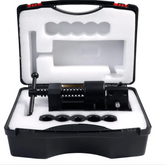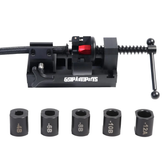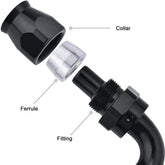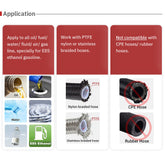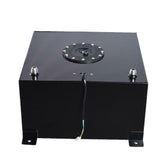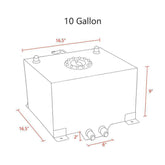As we all know, the thermostat of the car controls the water circulation of the engine. Once the thermostatic circuit fails, the car engine can cycle up and down. The following will introduce how to judge the symptoms, reasons and troubleshooting methods of the thermostat failure, so as to facilitate troubleshooting.
Symptoms of a broken thermostat
How to judge the thermostat is broken? After the thermostat circuit failed, the engine knocked and the power dropped significantly. The water temperature gauge shows 100°C, the engine temperature is too high, but the temperature of the coolant in the water tank is not high, and the radiator will not feel hot when touched by hands. The fan belt is not slipping, and the fan blades rotate normally. This indicates that the cooling system circulation is blocked or blocked. It can be preliminarily diagnosed as a damaged thermostat, the main valve cannot be opened, and the auxiliary valve cannot be opened. After the thermostat was removed, the engine resumed normal operation, and the fault disappeared after replacing the new thermostat.
When the thermostat fails, there are two situations:
First, the main valve of the thermostat is closed for a long time. Regardless of the water temperature, the circulation route of the cooling water is drawn by the water pump. , the so-called small loop. This is bound to cause the engine to overheat to the point of boiling. Second, the thermostat is always on. Since there is no control of the thermostat, the cooling water circulation route is always from the water pump to the radiator through the water jacket of the cylinder block and the cylinder head, and the water outlet pipe. That way, when the car starts, the engine cools down. The temperature of the cooling water rises slowly, which makes the engine unable to work at normal temperature and the engine temperature is too low.
Causes of thermostat failure
The common causes of thermostat failure are: the temperature of the valve opening and full opening is too high, or even not open, and the thermostat is not closed tightly. The former will cause the cooling water to not circulate effectively, resulting in engine overheating. In cold regions, the radiator may freeze because the cooling water cannot be circulated efficiently. The latter causes the engine to warm up slowly, which causes the engine to overcome. In addition, as the performance of the thermostat gradually decreases, the opening of the main valve gradually decreases, resulting in a decrease in the flow of cooling water into the large cycle, and the cooling system will gradually overheat.
Diagnosis and troubleshooting of thermostat failure
After the thermostat fails, the cooling water cannot circulate efficiently and the engine will overheat. In cold regions, the radiator may freeze due to insufficient circulation of the cooling water. The way to check the thermostat is to hang the thermostat in the beaker, fill the beaker with water, insert a thermometer, gradually increase the water temperature, and observe the temperature when the thermostat starts to open and when it is fully opened. The thermostat is fine. When the water temperature is 68℃~72℃, the valve starts to open; when the temperature continues to rise to 80℃~85℃, the valve fully opens. When the thermostat is fully opened, the maximum lift of the main valve should not be lower than the standard lift by 1/4~1/3.
The thermostat is broken, maintenance precautions: the valve of the thermostat is mostly made of aluminum alloy. If dirty water is added for a long time, the aluminum alloy will be corroded and rusted. When the engine water temperature rises to 80°C, the main valve of the thermostat should be opened normally for a large cycle. If the valve cannot be opened due to rust, the cooling water cannot enter the large cycle, and a certain air pressure and pressure will be generated in the small cycle, which reverses the flow instead. Small loops can't handle the increase in air pressure, and reverse air pressure will directly attack the radiator. When the radiator cannot bear such a large pressure, the corrugated cooling strips will be squeezed together, commonly known as "double eyelids", until the cooling strips expand and burst.
If it is confirmed that the thermostat is not working well, or its performance test does not meet the technical standards, it should generally be replaced.

